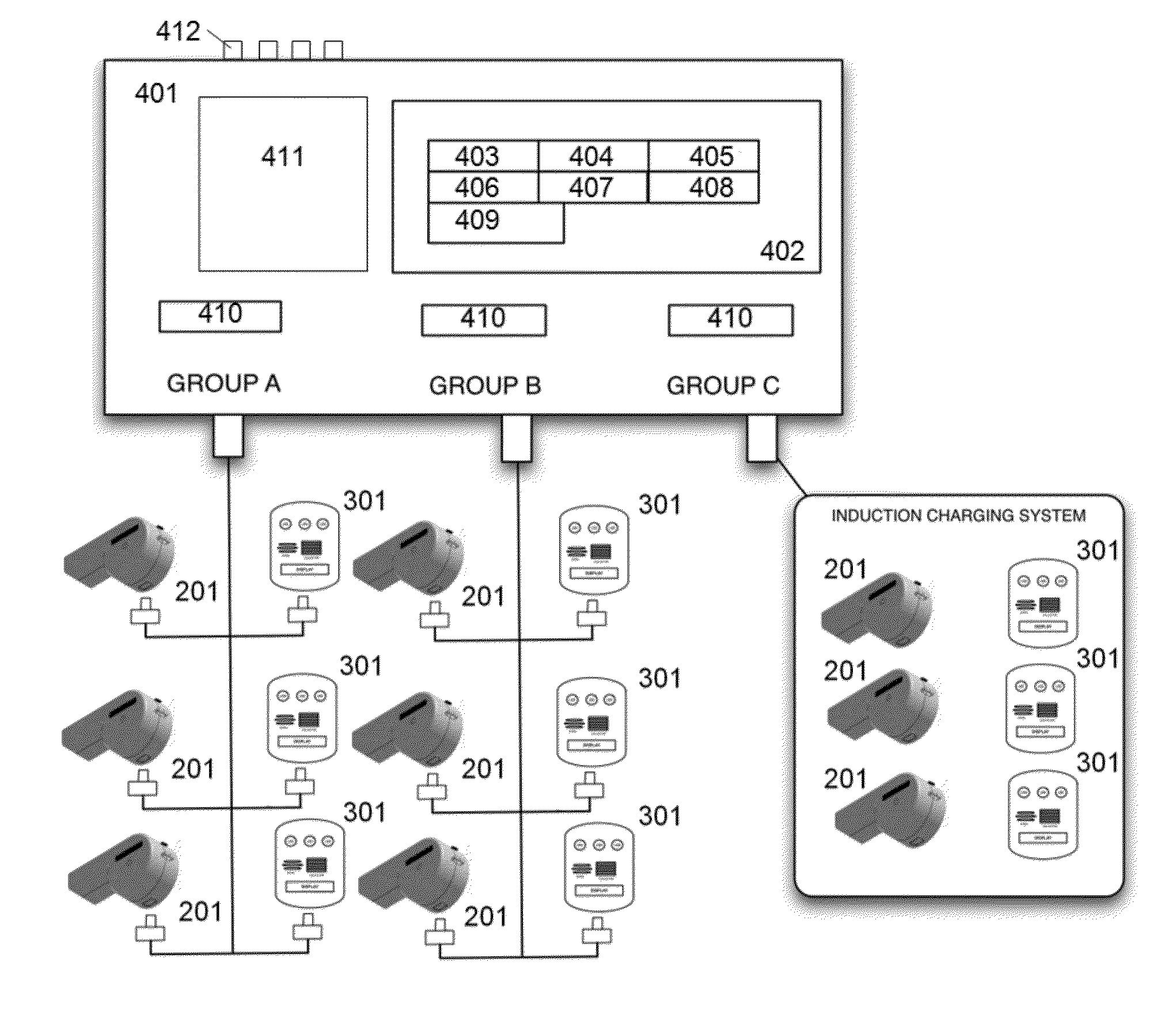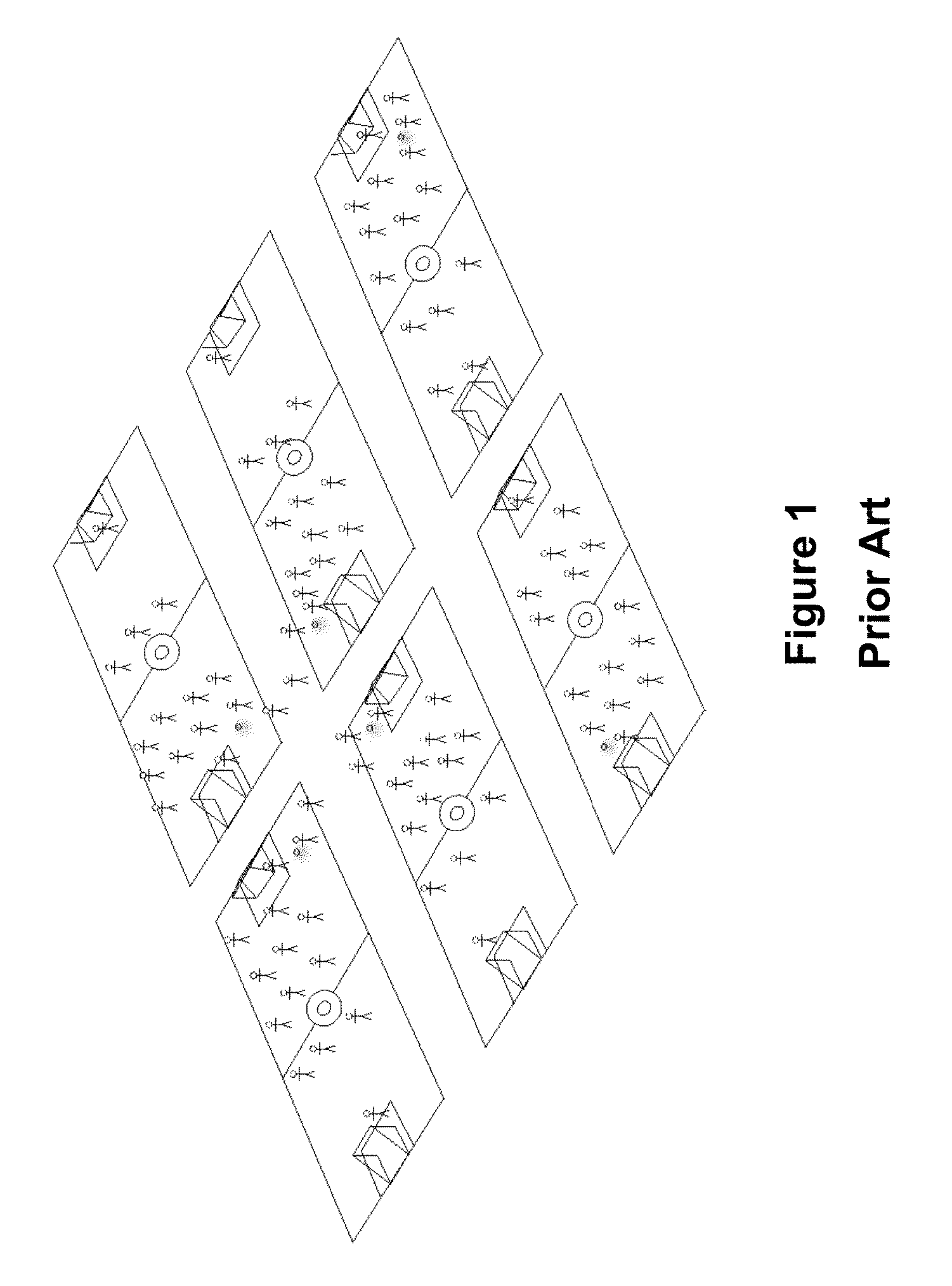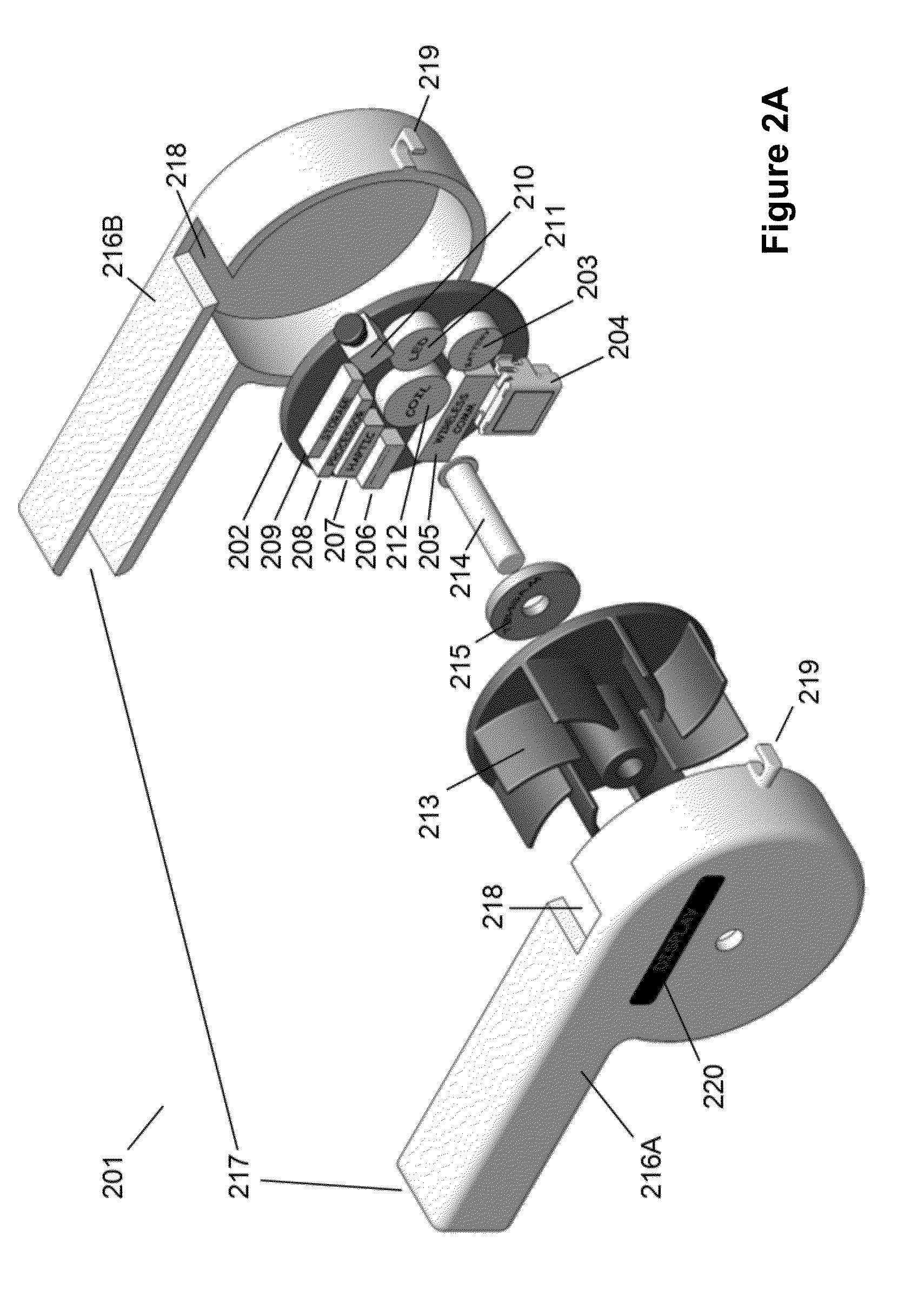Apparatus, systems and methods for signal localization and differentiation
a signal localization and differentiation technology, applied in the field of apparatus, systems and methods for signal localization and differentiation, can solve the problems of inability to establish a reliable and exclusive point-to-point signaling link with one intended recipient, difficulty in communicating or signaling link from one originator to a multiple of intended recipients, and inability to solve problems such as confusion, to achieve the effect of eliminating confusion, high configurable, and inherent flexibility
- Summary
- Abstract
- Description
- Claims
- Application Information
AI Technical Summary
Benefits of technology
Problems solved by technology
Method used
Image
Examples
Embodiment Construction
[0092]One embodiment of a signaling device 201 is depicted in FIGS. 2A through 2D. Each element which comprises signaling device 201 is identified with the same reference character throughout FIGS. 2A through 2D. In this embodiment, the signaling device is configured to resemble a traditional breath-activated whistle for ease of use and familiarity to the user. FIG. 2A provides an exploded view of signaling device 201 that comprises a circuit board 202 further comprising numerous components and subsystems, including but not limited to one or more batteries represented by exemplary battery 203. Preferably, said battery is a high capacity rechargeable battery, such as but not limited to one of any of lithium-ion (Li-on), nickel cadmium (NiCd), nickel metal hydride (NiMh), lithium ion polymer (Li-on polymer), or nickel lithium (NiLi).
[0093]Signaling device 201 may also comprise one or more connectors, jacks, or hardware connection points represented by exemplary jack 204 and one or mor...
PUM
 Login to View More
Login to View More Abstract
Description
Claims
Application Information
 Login to View More
Login to View More - R&D
- Intellectual Property
- Life Sciences
- Materials
- Tech Scout
- Unparalleled Data Quality
- Higher Quality Content
- 60% Fewer Hallucinations
Browse by: Latest US Patents, China's latest patents, Technical Efficacy Thesaurus, Application Domain, Technology Topic, Popular Technical Reports.
© 2025 PatSnap. All rights reserved.Legal|Privacy policy|Modern Slavery Act Transparency Statement|Sitemap|About US| Contact US: help@patsnap.com



